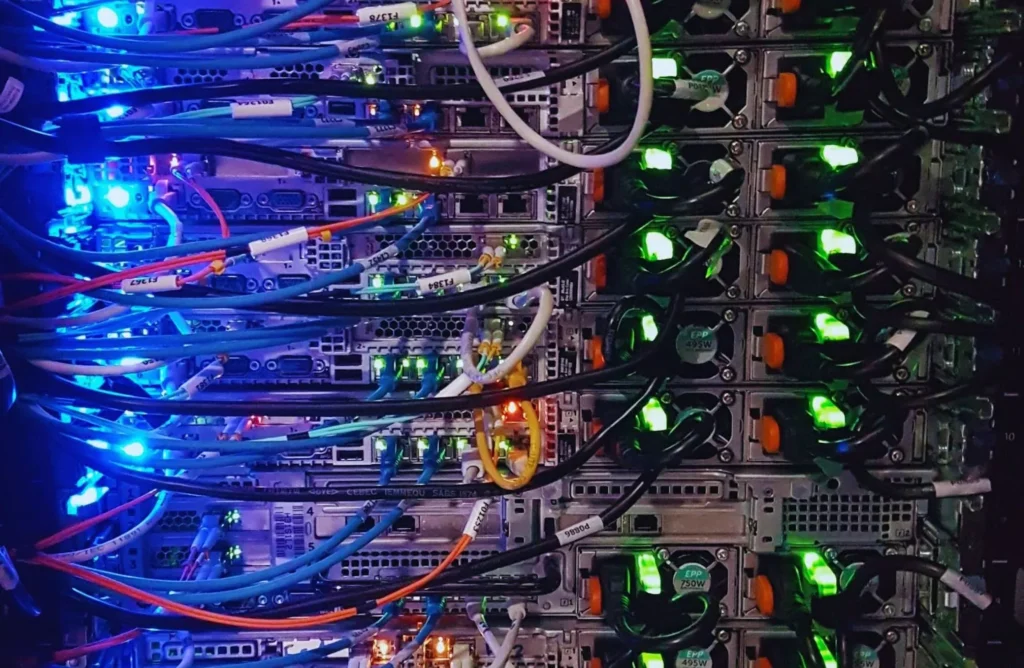The demand for data storage and processing is on the rise making data centers the backbone of our digital world but they are associated with high energy use that is not good for both our economies as well as the surrounding world. To mitigate this problem, a new initiative involves using LEDs that are more energy-efficient than other forms of lighting.
Leveraging LEDs in different data center applications can lead to a significant reduction in energy consumption as well as sustainability improvement and reduced operation expenses. This article discusses how light-emitting diodes aid in enhancing energy efficiency within data centers by looking at their use for lighting server rooms, cooling systems, and network devices.
LED Lighting for Server Rooms
Data center old-style illumination schemes often carry waste, consume a large amount of electricity, and give off much heat whereas the use of LED can help to maintain an environment in a better way. LEDs consume up to the eightieth percent lesser amount of power than the other conventional incandescent methods; therefore generating less heat energy that forces HVAC systems to support a cooling process. Estimated above.
LEDs can be used in various forms within server rooms, including sheet lights LED, panel lights, and tube lights, which provide uniform and efficient illumination. Optimal lighting with no hotspots can be guaranteed by placing these LED lights strategically, therefore enhancing visibility and safety for engineers as they consume less power. Furthermore, LEDs have a longer lifespan hence fewer replacements leading to lower maintenance costs.
Cooling Systems and Thermal Management
Data center operations face a key issue among others of server and other equipment-generated heat management. The temperature remains in its original range to avoid surge. LEDs are essential components in ensuring efficient heat distribution.
The cooling needs for a data center are directly influenced by LEDs as they produce less heat than conventional lighting systems. When this happens, it means less strain is placed on the cooling systems since there will be less heat generated from the lights; this in turn leads to lower levels of power consumption hence improving efficiency. Even more important is that today we even have modern LED systems that can work on smart cooling solutions that can dynamically change with real-time information hence utilizing energy even further.
LED Indicators in Network Equipment
In data centers LED technology is also widely used with the LED indicators being used in the network equipment. These indicators are vital in the monitoring of servers, switches, and other networking devices. They are preferred because of their low power consumption, ability to produce high light output, and long lifespan.
Using LED sheet lights, cuttable LED strips, and LED pucks within network equipment ensures that indicators are visible, allowing for quick and accurate status checks. Utilizing less power for indicator lights compared to traditional bulbs contributes to energy savings and also improves operational efficiency.
LED Displays for Monitoring and Control
Data centers use monitoring systems for measuring performance, finding problems, and managing operations effectively. LED displays are very important in this process as they always have clear results and various kinds of warnings. LED screens are useful in showing important network statuses and updated information in control rooms so that supervisors can act quickly after getting necessary evidence.
L.E.D displays are energy efficient, cost-effective, longer lasting, and have better light intensity than normal bulbs ensuring visibility even in bright areas. When data centers are merged with modern supervisory programs that utilize such displays, they can increase their operational control over their systems enhance their responses to emerging problems, and maintain their high performance while consuming less energy.
Benefits of Energy-Efficient LED Technology
The adoption of energy-efficient LED technology in data centers offers numerous benefits:
- Reduced Energy Consumption: Conventional lighting solutions result in higher total power usage compared to LEDs due to their increased energy consumption.
- Lower Cooling Costs: LEDs consume less power which makes for lower power bills and decreases the load on cooling systems of facilities.
- Enhanced Sustainability: Lowering carbon footprint and minimizing environmental damage is achieved through LEDs’ durability and their efficient use of energy.
- Improved Operational Efficiency: Data center operations become more efficient, leading to a drop in maintenance needs and a decrease in downtime with improvements in lightning as well as signal reliability.
Final Views
The use of energy-efficient LED technology in data centers has changed how they consume power and affect the environment. Using LEDs to light a server room or install them on monitoring displays, cooling systems, and network equipment indicators can lead to important savings and improved performance. With the Era of digitization in motion, it is paramount to adapt to green technologies like LEDs to address the rising needs with less impact on the environment. Not only does the adoption of LED technologies save money but also supports a green future for data centers.







